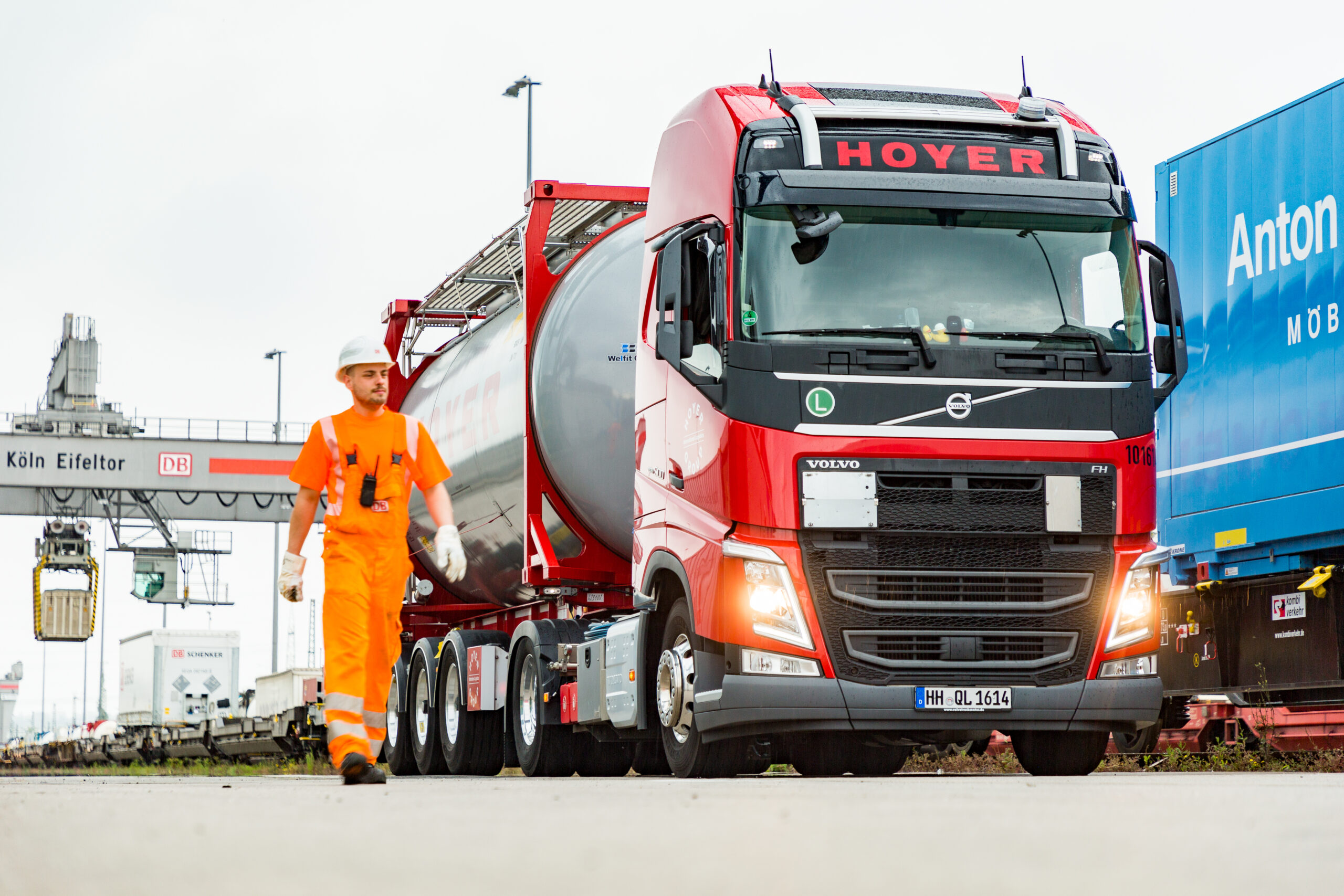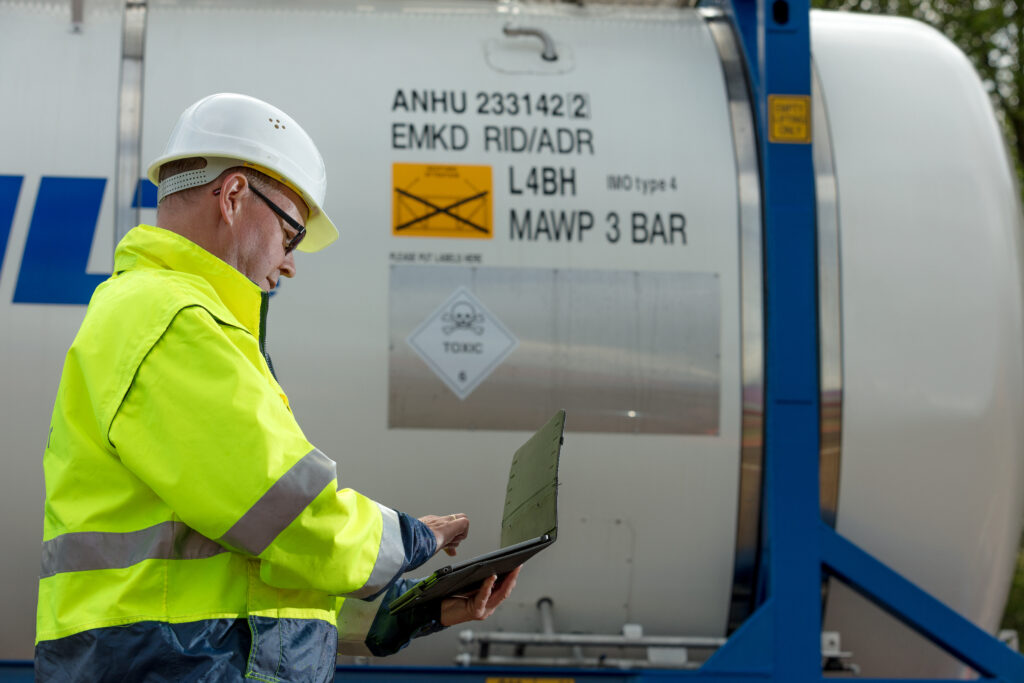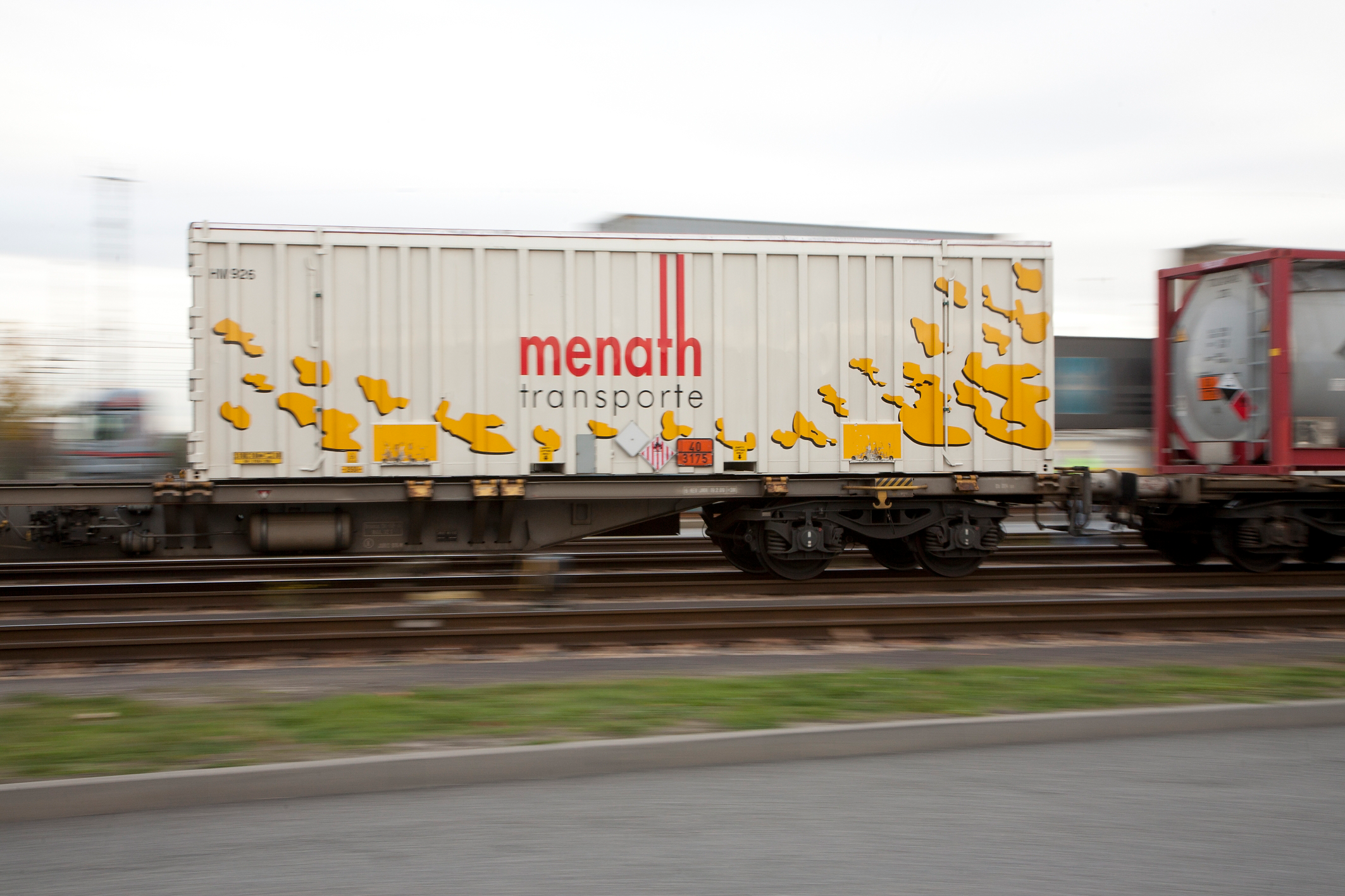The railroad is many times safer than the truck
How safe is the transport of hazardous goods in comparison with rail/trucks? – This question was investigated by the Pro-Rail Alliance. The result: “Goods are much safer on the railways than on the roads. That is why a number of hazardous goods may only be transported by rail. Compared to trucks, the risk of an accident is up to 42 times lower here.”
Factor 42 in terms of safety – this makes rail the predestined mode of transport for hazardous goods of all kinds. According to information from the Federal Railway Authority, 20 percent of the goods transported by rail are hazardous goods. For the transport of hazardous goods, the rail network scores among other things with high-performance signaling systems, standardized loading units, the extensive independence from traffic jams, weather and vacations as well as the choice between single wagons and block trains. It is only logical that intermodal transport secures the supply of raw materials for such important lead industries as pharmaceuticals, chemicals, energy, and automobiles.
According to RID (Règlement concernant le transport International ferroviaire des marchandises dangereuses), only the following dangerous goods are not permitted for rail transport:
- explosive substances of Class 1 compatibility group A (UN 0074, 0113, 0114, 0129, 0130, 0135, 0224 and 0473)
- self-reactive substances of Class 4.1 requiring temperature control (UN 3231 to 3240)
- polymerizing substances of Class 4.1 requiring temperature control (UN 3533 and 3534)
- organic peroxides of Class 5.2 requiring temperature control (UN 3111 to 3120)
- Sulfur trioxide with a purity of at least 99.95% carried in tanks without inhibitors (UN No. 1829)

In intermodal transport, we transport all other dangerous goods in the main loading units available for this purpose: Tank, gas and silo containers as well as trailers or multiple element gas containers (MEGCs). We also transport intermediate bulk containers (IBCs) or small tank containers mounted on flatracks.
Combined transport is also the first choice for transporting waste: For example, we organize the transport of construction waste, scrap metals, glass and paper by rail for our customers for recycling within the framework of the Closed Substance Cycle Waste Management Act, as well as used oils for reprocessing, oil-impregnated wooden sleepers for thermal disposal or contaminated soil for backfilling mine tunnels. This means that with the exception of explosive and radioactive waste, almost all waste can be transported in combined transport.
Dangerous goods transports by rail are also a clear answer to the shortage of drivers in road haulage – because in intermodal transport, trucks are only used regionally around the terminals. “This means that our customers have more trucks and more drivers available for their pre- and on-carriage transports – every day,” says Kombiverkehr Managing Director Alexander Ochs.
In short, if you want to transport hazardous goods over medium and longer distances, you’ll be traveling 1st class with intermodal.

Ullrich Lück, Manager Hazardous Goods & Waste Transports, Safety Advisor
Ullrich Lück is your contact for all aspects of dangerous goods & waste transport in combined transport. He has been heading the Dangerous Goods Working Group at the International Union for Combined Road-Rail Transport UIRR in Brussels for many years. In addition, Ullrich Lück is also intensively involved in the dangerous goods working groups of UIC (Union Internationale des Chemins de fer) and OTIF (Organisation intergouvernementale pour les transports internationaux ferroviaire). With his experience and knowledge from his now more than 25 years as a dangerous goods specialist, he regularly trains employees at agencies at the terminals on site as well as employees in his own company.
You can find more information on our website or contact Ullrich Lück directly. He will advise you on legal regulations, on packaging and the route of hazardous goods transports and explain to you the special features of intermodal transport with the carriers truck, rail and ship.
Ullrich Lück, Manager Hazardous Goods & Waste Transports, Safety Advisor
Phone: +49 40/74 05 19 60
E-Mail: ulueck@kombiverkehr-gefahrgut.de
Dangerous goods transports must always be clearly marked as such. In this article you will learn why this is so important.


Comments are closed.